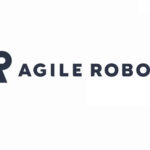At Agritechnica 2025, the biennial global top agricultural machinery exhibition in Hanover, Germany, XAG—a leader in agricultural robotics—unveiled two innovations: the P150 Max agricultural drone and R-Series agricultural unmanned ground vehicles (UGVs). These products reflect XAG’s integration of robotics and intelligent tech to boost field operation efficiency.
This year’s Agritechnica drew 500,000 visitors and 2,700+ exhibitors from 53 countries. Beyond the new drone and UGVs, XAG presented a full suite of smart agricultural solutions, including multi-functional drones, lightweight UGVs, tractor/transplanter autonomous consoles, intelligent water-fertilizer systems, and IoT sensors. The exhibits highlighted how automation and AI-driven technologies empower farmers to boost efficiency, optimize resource allocation, and narrow yield gaps.
P150 Max Drone: Heavy-Lift & Autonomous
The P150 Max excels in performance, intelligence, and stability, adapting to diverse field tasks by switching between spraying, sowing, mapping, and logistics systems. It has an 80kg payload and 20m/s maximum speed, handling high-intensity work in complex terrain.
Its RevoSpray 5 system has an 80L liquid tank and dual nozzles, delivering 32L/min flow—rising to 46L/min with an upgraded four-nozzle kit—for efficient orchard spraying. Droplet sizes (60-500 microns) suit different crops. For sowing, the RevoCast 5 system uses a 115L granule tank, achieving 300kg/min efficiency with wind-resistant, uniform distribution.
The drone’s RealTerra system maps 20 hectares per flight, with on-board AI identifying obstacles. Switching to RevoSling turns it into an 80kg-capacity aerial transport for rugged areas. Its SuperX 5 Ultra system enables centimeter-level autonomous flight, with 4D radar and FPV camera avoiding obstacles like irrigation pivots.
Operators use the XAG One App or SRC 5 controller for task planning; the system generates optimal routes. The XRTK 7 base station ensures precision in remote areas, and super-fast charging (7 minutes) minimizes downtime. Built on 18 years of R&D, the P150 Max performs reliably in real agricultural settings.
R-Series UGVs: For Specialty Crops
The R-Series UGVs combine intelligent navigation and control for crop protection and material transport. With compact electric design, they access areas traditional tractors can’t—dense orchards, narrow vineyards, and greenhouses.
The series has two models: R100 (120L capacity, 4WD, dual-jet sprayers) for dense crops like greenhouse vegetables; R200 (240L capacity, 6WD, four-jet sprayers) for wider-row orchards/vineyards. Both have all-aluminum chassis and suspended axles for balance on uneven terrain. Their sprayers (60-200 micron droplets) ensure coverage while cutting pesticide/water use.
Farmers use the SRC 5 controller (touchscreen, dual joysticks, FPV, XLink tech) to operate UGVs remotely, avoiding pesticide exposure. On-board systems support cruise, path tracking, and repeated operations. AI safety tools and RealTerra mapping adjust routes for safe navigation.
Addressing labor shortages and heavy workloads, the R-Series reduces physical labor and automates repetitive tasks. Expandable platforms allow custom mods for weeding and transport, supporting high-value crop management.

Autonomous Driving & Irrigation Tools
XAG also showcased the APC2 series autonomous consoles and intelligent water-fertilizer systems—key to connected smart farms. The 2025-launched APC2 Flex offers automated steering for small/medium tractors, delivering centimeter-level precision at low cost, reducing fuel use and operator fatigue. Installed in 20 minutes (no steering wheel replacement), it works with most tractors and equipment via the XAG Autonomous Driving App.
The water-fertilizer system and IoT products simplify irrigation and nutrient management. With smart valves and injectors, it delivers water/nutrients to roots precisely. Farmers monitor tasks via mobile App; local servers and wireless repeaters ensure connectivity in non-network areas.
The P150 Max and R-Series mark XAG’s breakthrough in smart agriculture. They solve labor shortages and cost hikes, letting farmers complete tasks precisely and efficiently with minimal labor—setting a benchmark for sustainable, high-yield farming.











